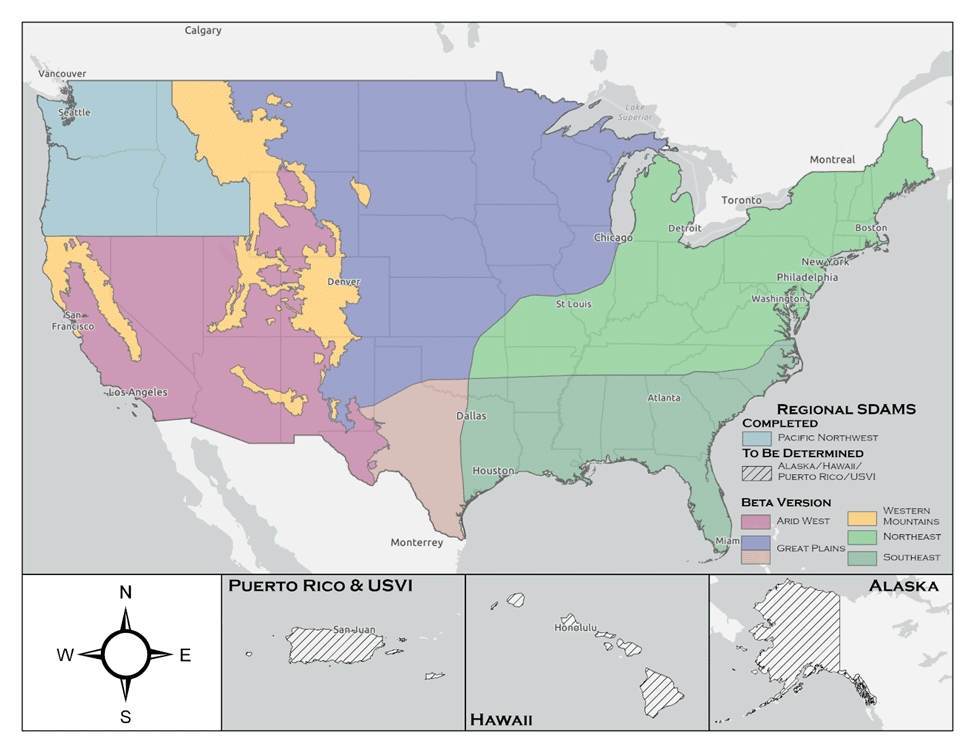
Navigating the Confluence of WOTUS, SDAM, and OHWM in Ecosystem Assessment
The integration of the Waters of the United States (WOTUS), the Stream Duration Assessment Model (SDAM), and the Ordinary High Water Mark (OHWM) in wetland assessment provides a holistic approach to identifying and protecting these ecologically significant areas. However, this integration is not without its challenges, which stem from the complexity of wetland ecosystems, the nuances of environmental regulation, and the need for precise scientific data. Expanding on these challenges and opportunities reveals the intricacies involved in effective wetland management.
Data Precision and Availability
One of the foremost challenges in integrating WOTUS, SDAM, and OHWM is the need for high-quality, precise data. Wetland assessment requires detailed information on hydrology, soil types, vegetation, and other ecological indicators. The accuracy of this data directly impacts the determination of WOTUS boundaries, the application of SDAM, and the identification of the OHWM. However, obtaining such data can be resource-intensive, requiring extensive field surveys, remote sensing technology, and hydrological modeling. Moreover, the dynamic nature of wetlands, which may change seasonally or due to climate impacts, adds to the complexity of maintaining up-to-date and relevant data.
Interagency Coordination
Effective integration of these assessment tools also depends on robust interagency coordination. The regulatory landscape of wetland protection in the United States involves multiple federal agencies, including the Environmental Protection Agency (EPA), the U.S. Army Corps of Engineers, the U.S. Fish and Wildlife Service, and state and local entities. Each agency may have different mandates, priorities, and methodologies, which can lead to challenges in achieving a unified approach to wetland assessment and protection. Streamlining communication, data sharing, and regulatory processes among these entities is crucial for the effective implementation of WOTUS, SDAM, and OHWM standards.
Dynamic Nature of Wetland Ecosystems
Wetlands are dynamic systems that respond to a variety of environmental factors, including precipitation patterns, river flow regimes, and human activities. The transient nature of these ecosystems poses a significant challenge to the static frameworks used for their assessment and regulation. For instance, the OHWM might shift due to natural sedimentation processes or human-induced changes in water flow, requiring constant monitoring and adjustment of regulatory boundaries. Similarly, the flow characteristics used in SDAM assessments may vary, affecting the classification of water bodies connected to wetlands. Adapting regulatory approaches to account for these dynamic changes is essential for the long-term protection and management of wetland resources.
Legal and Policy Frameworks
The legal and policy frameworks governing wetland protection, particularly the definition and application of WOTUS, have been subject to significant legal challenges and policy shifts over the years. These changes can lead to uncertainty and inconsistency in wetland assessment and protection efforts. For practitioners and stakeholders, staying informed about current regulations and understanding how they apply to different wetland types and situations is a continual challenge. Ensuring that legal frameworks are both scientifically grounded and flexible enough to adapt to new environmental insights is crucial for effective wetland management.
Conclusion
Integrating WOTUS, SDAM, and OHWM in wetland assessment requires navigating complex environmental, regulatory, and technical landscapes. Addressing the challenges of data precision, interagency coordination, the dynamic nature of wetlands, and evolving legal frameworks is essential for creating a coherent and effective approach to wetland protection. Embracing adaptive management strategies, fostering collaboration among stakeholders, and investing in research and monitoring are key steps toward ensuring that wetlands continue to provide their invaluable ecological services for generations to come.
